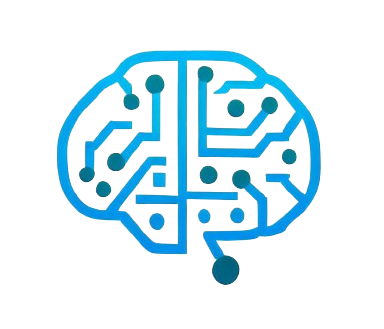Understanding machine learning frameworks and libraries is paramount for any developer or data scientist delving into the field of artificial intelligence. The Python programming language is fertile ground for machine learning, containing a rich ecosystem of libraries that serve as building blocks for AI applications. These tools provide pre-written code for a multitude of tasks—from data processing and model training to visualization and deployment—expediting the development process and allowing practitioners to focus on solving domain-specific problems.
Scikit-learn is one of the most available and widely used libraries. It supports a wide range of machine learning algorithms for classification, regression, clustering and dimensionality reduction. Its design principles focus on ease of use and adopting consistent interfaces for different ML models, making it a great choice for both beginners and experts. Further enhancing its usefulness, scikit-learn integrates easily with other Python libraries such as Pandas for data processing and Matplotlib for data visualization.
For deep learning—the subset of machine learning that focuses on neural networks—frameworks like TensorFlow and PyTorch are leading the way. TensorFlow, developed by Google, excels at large-scale and complex neural network tasks. It offers robust automatic discrimination capabilities that facilitate the computation of gradients for training neural networks. In addition, TensorFlow’s flexibility enables it to be deployed on both CPUs and GPUs, as well as mobile and embedded platforms.
 Developed by Facebook’s AI research lab, PyTorch has been praised for its dynamic computation schedule that allows network architecture to be changed on the fly. This feature is particularly attractive for research and experimentation where the ability to easily modify and debug neural networks is required. PyTorch’s imperative programming model appeals to developers because it makes code intuitive and Pythonic. Despite their differences, both TensorFlow and PyTorch offer extensive ecosystem support, including tools for model maintenance and production.
Developed by Facebook’s AI research lab, PyTorch has been praised for its dynamic computation schedule that allows network architecture to be changed on the fly. This feature is particularly attractive for research and experimentation where the ability to easily modify and debug neural networks is required. PyTorch’s imperative programming model appeals to developers because it makes code intuitive and Pythonic. Despite their differences, both TensorFlow and PyTorch offer extensive ecosystem support, including tools for model maintenance and production.
Originally a standalone high-level API, Keras now runs on top of TensorFlow, providing a more user-friendly interface for building and training deep learning models. This simplifies the process of defining network layers and abstracts away many of the more complex aspects of deep learning models, which is especially useful for newcomers to the field.
Data Preprocessing For Machine Learning
Data preprocessing for machine learning is an important and often crucial step in an overall machine learning system. This is the transformation stage where the raw data is cleaned and transformed into a format that algorithms can effectively work with to gain insights. This process helps improve the quality and accuracy of the final model and is key to obtaining accurate predictions.
The data preprocessing workflow begins with data collection and integration, which may involve combining data from different sources and formats. This step addresses issues such as duplicate records, inconsistent data records, and missing values. Data cleanup usually requires careful study and domain expertise to determine the best course of action, whether to delete, attribute, or correct these anomalies. The Pandas Python library offers a wide range of functions to perform these cleanup tasks, making it easy to handle data transformations and manipulations.
Handling missing values is extremely important because they can negatively affect the performance of machine learning models. Methods such as mean or median imputation are widely used, where missing values are replaced by the mean or median value of the corresponding trait. However, more sophisticated methods, such as using other functions to predict missing values, can also be used for finer imputation.
Feature normalization and scaling are preprocessing steps in which numerical feature values are adjusted to a common scale without distorting differences in value ranges or losing information. This is especially important for algorithms that rely on the distance between data points, such as k-nearest neighbors (KNN) or k-means clustering. The scikit-learn Python library provides various scalers such as MinMaxScaler or StandardScaler to make this step easier.
Categorical data also pose a problem; most machine learning models cannot directly process non-numerical data. Encoding categorical information into numerical formats is a common solution. Standard coding converts each category into a new column, ensuring that models can effectively interpret these features without introducing spurious numerical relationships. For example, the function “color” with categories “red”, “blue”, “green” will be converted to three columns “color_red”, “color_blue” and “color_green”, where each row will have a 1 in the column corresponding to its category, and 0 in others.
Another important aspect of preprocessing is feature development, which involves creating new features from existing data to better capture underlying patterns. This may involve extracting information from dates or timestamps, grouping numerical data into categories, or creating interaction functions that represent the combined effects of two or more variables. When done correctly, feature development can significantly improve model performance.
Dimensionality reduction techniques such as principal component analysis (PCA) can be applied to reduce the number of features in a dataset, effectively mitigating overfitting problems and reducing computational costs.
Choosing and Implementing Machine Learning Algorithms
Choosing a machine learning algorithm begins with an in-depth analysis of the problem we are trying to solve. In supervised learning, for example, where we have labeled the data, we can choose between classification algorithms if the outcome is categorical (eg spam or not) or regression algorithms if the outcome is a continuous value (eg house prices). Within these two categories, there are many options, ranging from simple interpretive models such as logistic regression or decision trees to more complex, powerful ones such as ensemble methods or neural networks.
In contrast, unsupervised learning does not rely on pre-labeled outcomes. Here, the primary goal is usually to discover underlying patterns or groupings in the data, which involves algorithms focused on clustering (eg, k-means or hierarchical clustering) or association (eg, Apriori or Eclat algorithms).
Another category, reinforcement learning, includes algorithms that learn to make a sequence of decisions by interacting with the environment to achieve a goal. This approach is complex and is often used in fields such as robotics, gaming, and navigation.
Regardless of the algorithm chosen, the implementation process in Python has streamlined thanks to libraries such as scikit-learn, which abstract away much of the underlying complexity. To implement a chosen algorithm, one usually starts by importing the algorithm class from scikit-learn and instantiating it with any desired hyperparameters—a process that defines the specifics of the model architecture.
The model is then trained on a trained dataset that has been split into training and testing subsets. The training set is used to fit the model—this is where the algorithm “learns” from the data. The scikit-learn library provides a simple `.fit()` method for this purpose. Model training can be computationally intensive, especially for large datasets or complex algorithms such as deep learning networks, but scientific Python computing libraries such as NumPy and SciPy can optimize these calculations using mathematical efficiency and hardware acceleration.
After training, we need to evaluate the model’s performance using a test set that consists of data that the model has never seen. This evaluation step is critical in assessing how well a trained model will generalize to new, unknown data. Scikit-learn offers several metrics and scoring methods, including the `.score()` method for quick precision estimation, and more detailed reports with other functions that provide precision, recall, and confusion matrix analysis.
In the implementation process, the data specialist may repeat the model selection and configuration phase several times. They can experiment with different algorithms, tune hyperparameters, or go back to pre-processing the data to improve the quality of the dataset based on information gained from model performance.
An important factor in the selection and performance of any algorithm is its hyperparameters, which must be tuned to optimize performance. Tools like GridSearchCV in scikit-learn help by automating the search for the best hyperparameters in defined ranges using cross-validation on the training set.
